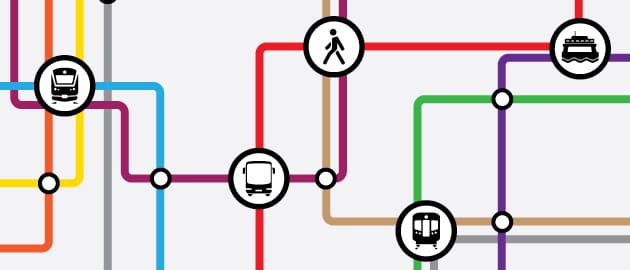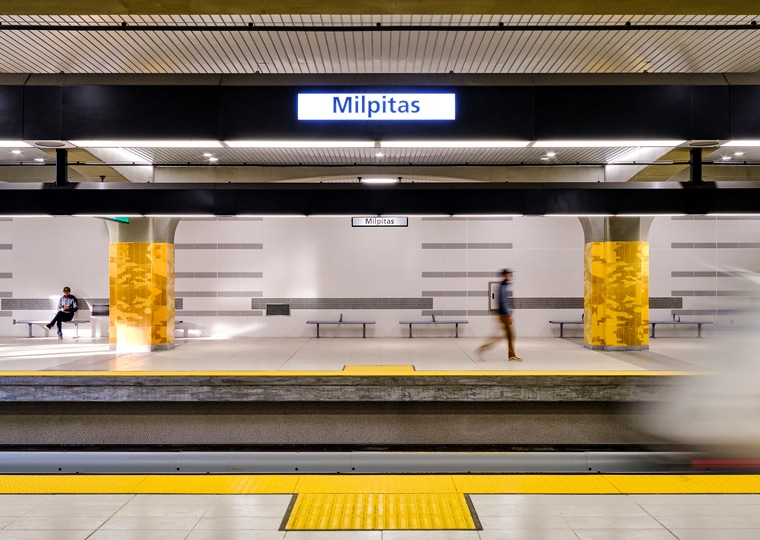
If you’ve ever taken public transportation, you’ve likely seen someone maneuvering a stroller down subway stairs, pushing a cart filled with groceries onto the bus, or making sure their children sit down before them. Often, they are women, whose travel experiences and patterns were found to be quite different compared to men by the Los Angeles County Metropolitan Transportation Authority (Metro) in its 2019 study “Understanding How Women Travel.”
Studies on gender-based transit inequities are not a new phenomenon, but how agencies take action on these studies is—and that’s exactly what Metro set out to do in its Gender Action Plan (GAP). The first-of-its-kind plan in the U.S., GAP recommends progressive changes to Metro’s transit system and policies to better meet the needs of women and marginalized gendered communities, who according to recent customer surveys make up approximately 44-49% of Metro’s rail and bus ridership, respectively.
At STV, I led our planning team and other transit technical experts, who served as the prime consultant for GAP, alongside our partners at TransLink Consulting, Fehr & Peers, OhanaVets, and gender and transportation experts from the University of California, Los Angeles and Mount Allison University.
Long before my role as planning manager for major Los Angeles transportation projects, I traveled by bus across Riverside and Los Angeles counties to get to my night shift food service job. I had to catch a bus that arrived over an hour before my shift or wait uncomfortably at poorly lit stops late at night.
So much of the transit system is structured around the 9-5 commute, with less frequent train or bus service outside those hours. Consistent with my own experience, Metro found women often travel during these off-peak hours, commuting to jobs in the service, healthcare, and hospitality industries, traveling with children, or running household errands with multiple stops along the way. Additionally, women and marginalized gendered commuters face safety concerns when riding Metro, yet do not always see increased law enforcement presence as the safest solution.
Over the course of 18 months, our team initiated a multi-pronged approach to identify what actions Metro can take that specifically benefit one of its main demographics. We interviewed Metro staff, and formed an advisory committee comprised of several authority representatives. We led focus groups with community-based organizations and solicited feedback from people of all genders to share what their experiences were and what would make the transit system better.
One of the highlights for me was our analysis of best practices in gender equity already implemented by transit agencies around the world. We held workshops with transit agencies in the USA, Canada, and the United Kingdom, who shared that when they made improvements to their systems, even if there was not a gender-based approach from the outset, they often saw improvement in women’s transit experiences exponentially.
During our internal audit of Metro’s existing criteria for how projects, programs, and services are designed, we identified gaps and opportunities to improve Metro’s planning process. After devising categories and a set of questions, our team developed the Gender Analysis Tool for Metro to implement throughout the agency. The tool is a practical resource guide for Metro staff in the early stages of a project or program, to help them identify how actions and services can better support the needs of women.
Key initiatives Metro will look to implement as a result of the GAP include:
- Station and stop design strategies, including expanding vehicle space options for women traveling with strollers and carts; establishing partnerships with local businesses to cross-promote services while providing food and restroom access; and creating designated zones on rail platforms where seating, lighting, technology, and other amenities are concentrated;
- Fare policy strategies, such as Metro’s fare capping program to cap the amount fare riders pay in a given time period, no matter how many transfers or trips are made, and promoting their Low-Income Fare is Easy (LIFE) Program through partnerships with healthcare providers; and
- Safety strategies, including promoting the “Request-a-Stop” program for bus riders in between designated stops, enhancing Metro’s anti-sexual harassment campaign, exploring the feasibility of a silent alarm system.
My personal experience, as both a Metro user and as a woman, brought a unique perspective to my role in supporting the GAP’s development. The same could be said for our entire project team. In the West Region, most of STV’s planning group leaders are women and our GAP team was predominantly women. That is something you do not see every day in the engineering and planning sector, and it is something that we are hoping to change.
We had several technical professionals at STV lend their expertise as well as their personal experience to the project. They included Mia Logg, who really championed putting the final report together, as well as May Lau, Megan McPhilimy, Vivian Papen, Milena Popow, and Athena Ullah.
We are experts in transportation and planning, passionate about transit, and frequent transit users ourselves—who are also women. The impact this has had on the GAP project is one that makes our team stand out, and I am grateful to be in this position, alongside Metro, to improve the system for everyone who relies upon it.

Elenna Salcido, AICP, is an STV planning manager. With extensive experience providing transportation and environmental planning support for rail transit and multimodal infrastructure projects in Southern California, she is passionate about improving transit systems and transportation. She is director elect of the Los Angeles section of the American Planning Association California Chapter.






